21 Foods That Can Save Your Heart

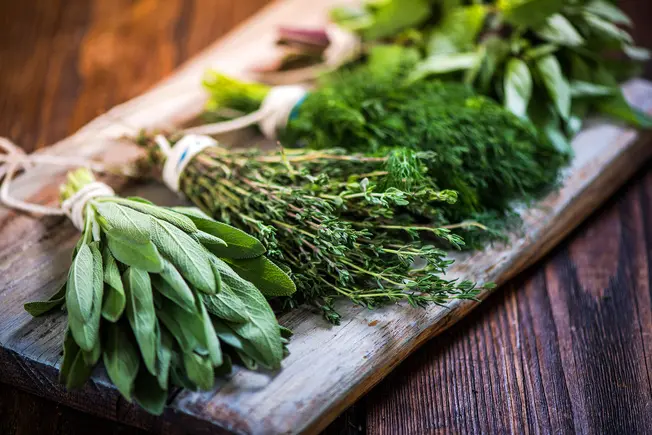
Fresh Herbs
When you add these to foods instead of salt and fat, you're making a heart-healthy choice. They add flavor without the bad stuff. Spices and other foods are delicious ways to eat heart-smart.
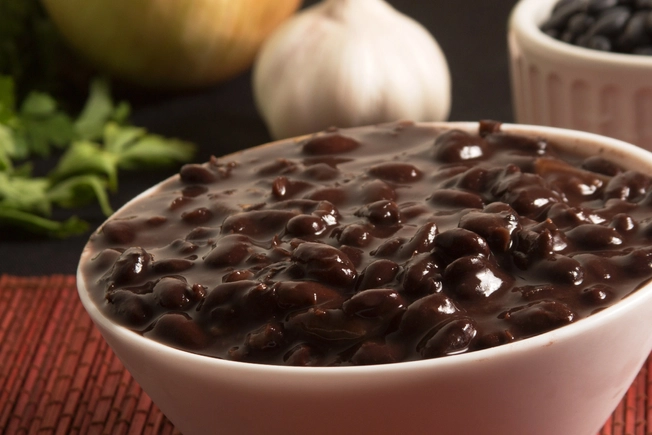
Black Beans
Mild, tender black beans are packed with heart-healthy nutrients. Folate, antioxidants, and magnesium can help lower blood pressure. Their fiber helps control both cholesterol and blood sugar levels. Add beans to boost soups and salads.
Prep Tip: Rinse canned beans to remove extra salt.

Red Wine and Resveratrol
If you drink alcohol, a little red wine may be a heart-healthy choice. Resveratrol and catechins, two antioxidants in red wine, may protect artery walls. Alcohol can also boost HDL, the good cholesterol.
Tip: Too much alcohol hurts the heart. Don’t have more than one drink a day for women or two drinks for men. It’s best to talk to your doctor first. Alcohol may cause problems for people taking aspirin and other medications.
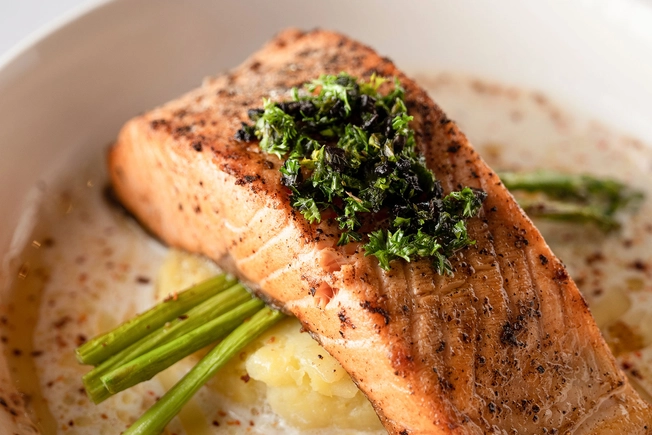
Salmon: Super Food
A top food for heart health, it’s rich in omega-3s. Omega-3s are healthy fats that may lessen the risk of heart rhythm disorders and lower blood pressure. They may also lower triglycerides and curb inflammation. The American Heart Association recommends two servings of salmon or other oily fish a week.
Cooking Tip: Bake salmon in foil with herbs and veggies. Toss extra cooked salmon in fish tacos and salads.
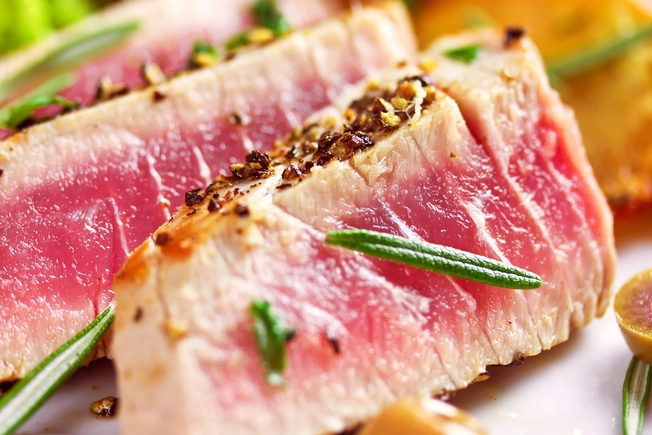
Tuna for Omega-3s
Often cheaper than salmon, tuna also has omega-3s. Albacore (white tuna) has more omega-3s than other tuna varieties. Try grilling tuna steak with dill and lemon. Reel in these other sources of omega-3s, too: mackerel, herring, lake trout, sardines, and anchovies.
Health Tip: Choose tuna packed in water, not oil, to keep it heart-healthy.
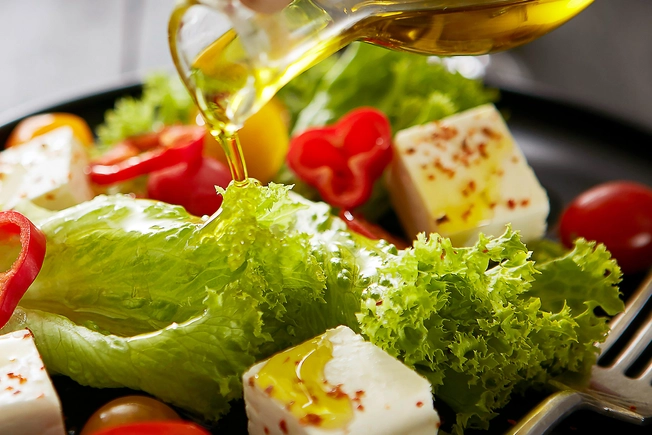
Olive Oil
This oil is a healthy fat made from smashed olives. It's rich in heart-healthy antioxidants. They may protect your blood vessels. When olive oil replaces saturated fat (like butter), it can help lower cholesterol levels. Try it on salads and cooked veggies, or with bread.
Taste tip: For the best flavor, look for cold-pressed and use it within 6 months.
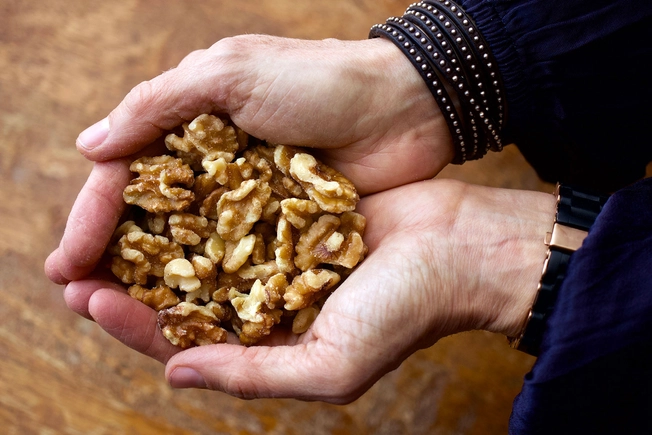
Walnuts
A small handful of walnuts a day may lower your cholesterol. It may also protect against inflammation in your heart’s arteries. Walnuts are packed with omega-3s, healthy fats called monounsaturated fats, plant sterols, and fiber. The benefits come when walnuts replace bad fats, like those in chips and cookies.
Tip: Try walnut oil in salad dressings.
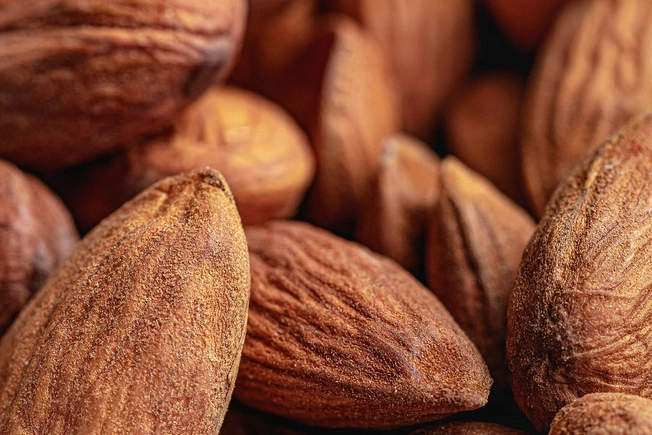
Almonds
Slivered almonds go well with vegetables, fish, chicken, and desserts. They have plant sterols, fiber, and heart-healthy fats. Almonds may help lower "bad" LDL cholesterol. Grab a small handful a day.
Taste Tip: Toast them to boost their creamy, mild flavor.
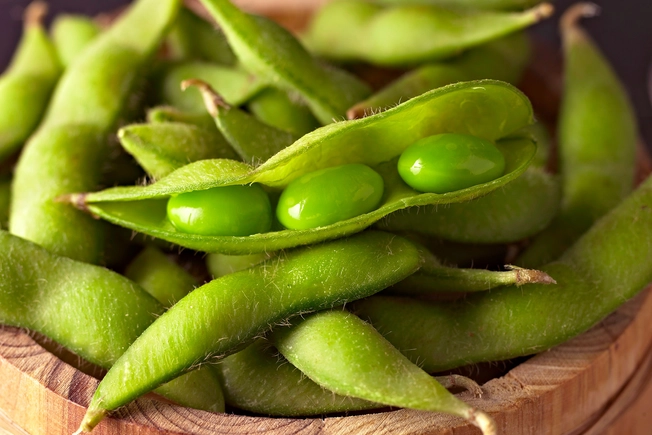
Edamame
You may have seen these as an appetizer at an Asian restaurant. Edamame is the Japanese word for soybeans. Soy protein can help lower cholesterol levels. A cup of edamame also has 8 grams of heart-healthy fiber. To get that much fiber from whole wheat bread, you’d need to eat about four slices.
Tip: Take frozen edamame, boil it, and then serve warm in the pod. Popping out the yummy beans from the tough pod makes a satisfying snack.

Tofu
Eat tofu and you'll get a great form of vegetarian soy protein with heart-healthy minerals, fiber, and polyunsaturated fats. It can take on the taste of the spices or sauces you use to cook it.
Tips: Chop firm tofu, marinate, then grill or stir-fry, going easy on the oil. Add tofu to soups for protein with little added fat.
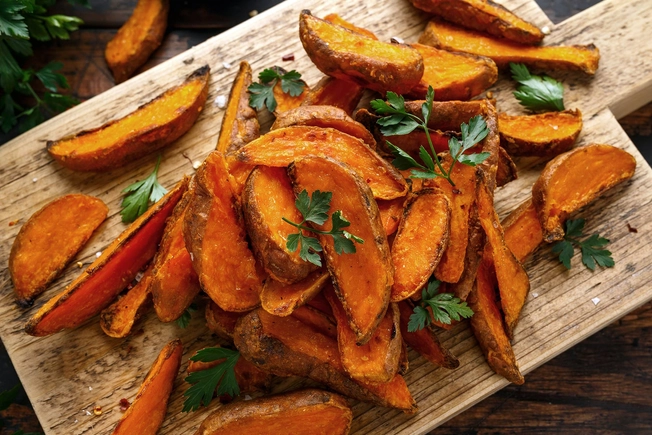
Sweet Potatoes
Swap white potatoes for sweet potatoes. With a lower glycemic index than white potatoes, these spuds won't cause a quick spike in blood sugar. They also have fiber, vitamin A, and lycopene.
Taste Tip: Boost their natural sweetness with a sprinkle of cinnamon and lime juice instead of sugary toppings.

Oranges
Sweet and juicy, oranges have the cholesterol-fighting fiber pectin. They also have potassium, which helps control blood pressure.In one study, 2 cups of orange juice a day lowered diastolic blood pressure among patients with overweight.
Nutrition Tip: A medium orange has about 62 calories and 3 grams of fiber.
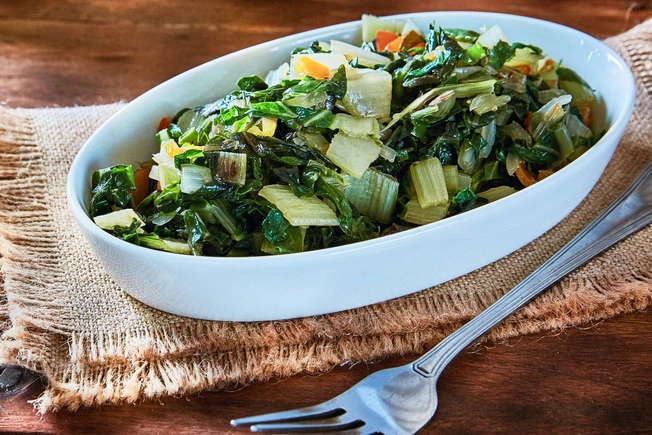
Swiss Chard
This dark green, leafy vegetable is rich in potassium and magnesium. These minerals help control blood pressure. Swiss chard also has heart-healthy fiber, vitamin A, and the antioxidants lutein and zeaxanthin. Try serving it with grilled meats or as a bed for fish.
Prep Tip: Sauté it with olive oil and garlic until wilted. Season with herbs and pepper.
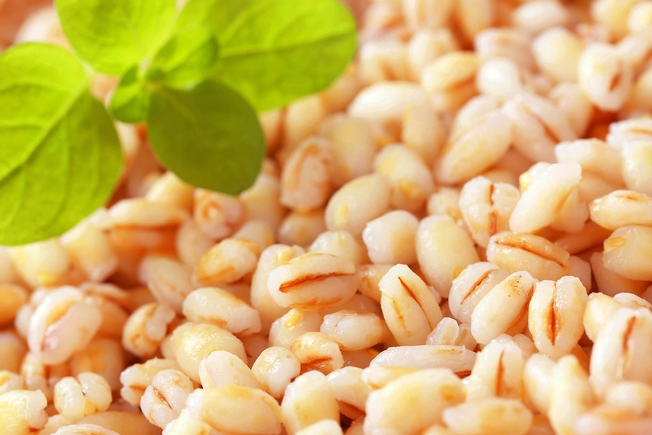
Barley
Try this nutty whole grain in place of rice. You can also simmer barley into soups and stews. The fiber in barley can help lower cholesterol levels. It may lower blood sugar levels, too.
Tip: Get to know your barley. Hulled or “whole grain” barley is the most nutritious. Barley grits are toasted and ground. They make a nice cereal or as a side dish. Pearl barley is quick, but a lot of the heart-healthy fiber has been removed.
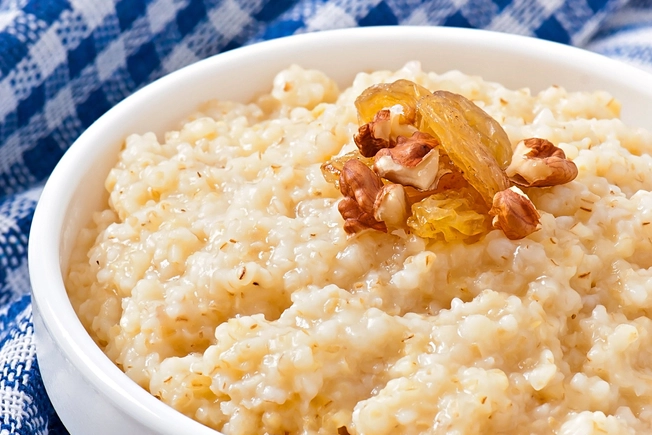
Oatmeal
A warm bowl of oatmeal fills you up for hours, fights snack attacks, and helps keep blood sugar levels stable over time -- making it useful for people with diabetes, too. Oats’ fiber can help your heart by lowering bad cholesterol (LDL). Best results come from using steel cut or slow cooked oats.
Baking Tip: Making pancakes, muffins, or other baked goods? Swap out one-third of the flour and put in oats instead.
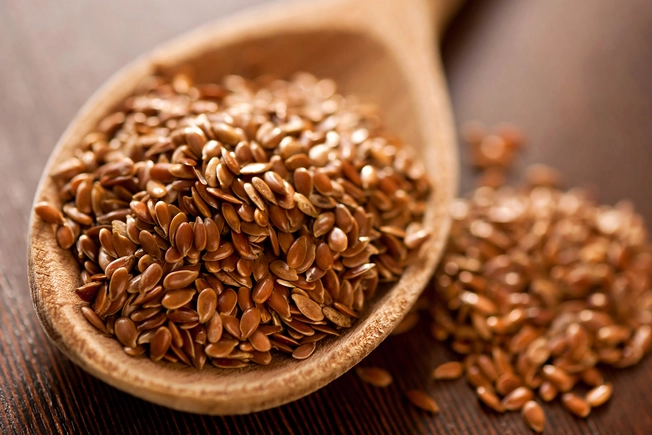
Flaxseed
This shiny, honey-colored seed has three things that are good for your heart: fiber, phytochemicals called lignans, and omega-3 fatty acids.
Tip: Grind flaxseed for the best nutrition. Add it to cereal, baked goods, yogurt, or mustard on a sandwich.
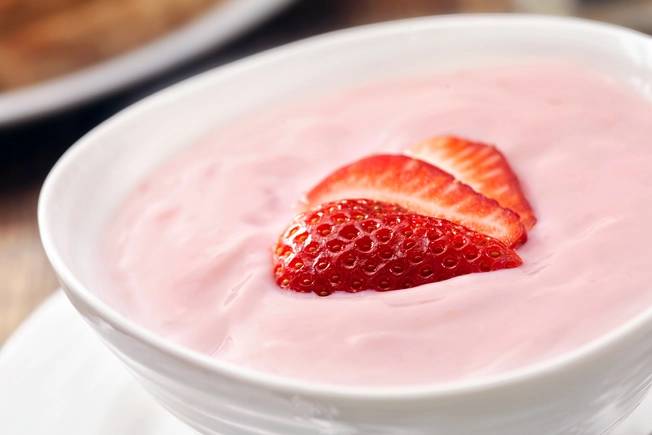
Low-Fat Yogurt
When you think of dairy foods, you probably think, “Good for my bones!” These foods can help control high blood pressure, too. Yogurt is high in calcium and potassium. To really boost the calcium and minimize the fat, choose low-fat varieties.
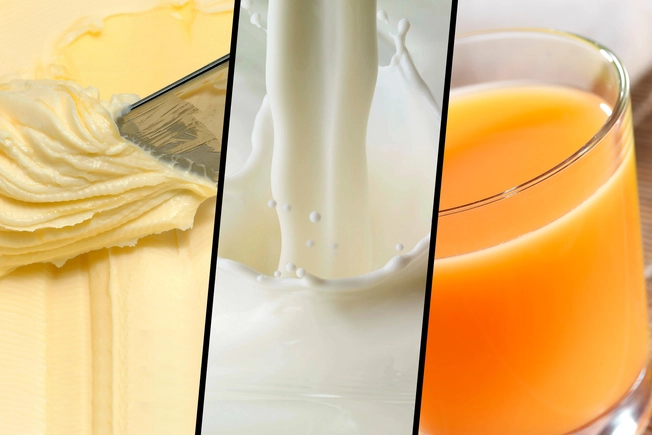
Foods Fortified With Sterols
Some margarines, soy milks, almond milks, and orange juices have cholesterol-fighting sterols and stanols added. These plant extracts block your gut from soaking up cholesterol. They can lower LDL levels by 10% without messing with good cholesterol.
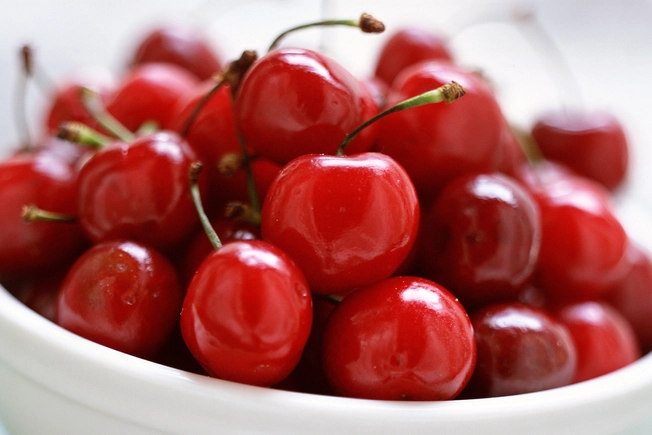
Cherries
Sweet cherries, sour cherries, dried cherries, and cherry juice -- they’re all good. All are packed with an antioxidants called anthocyanins. They’re believed to help protect blood vessels.
Get More: Sprinkle dried cherries into cereal, muffin batter, green salads, and wild rice.
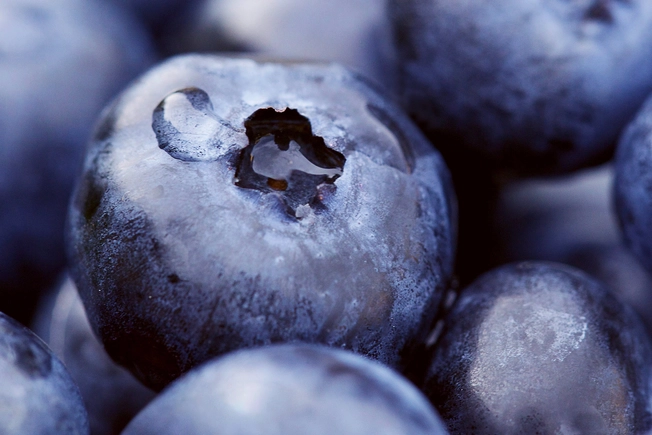
Blueberries
Blueberries are simply brilliant when it comes to nutrition. They’ve got anthocyanins, those blood vessel-helping antioxidants. Those antioxidants give the berries their dark blue color. Blueberries also have fiber and more than a handful of other great nutrients. Add fresh or dried blueberries to cereal, pancakes, or yogurt.
Dessert Idea: Puree a batch for a sweet sauce you can use as a dip or to drizzle on other sweet treats.
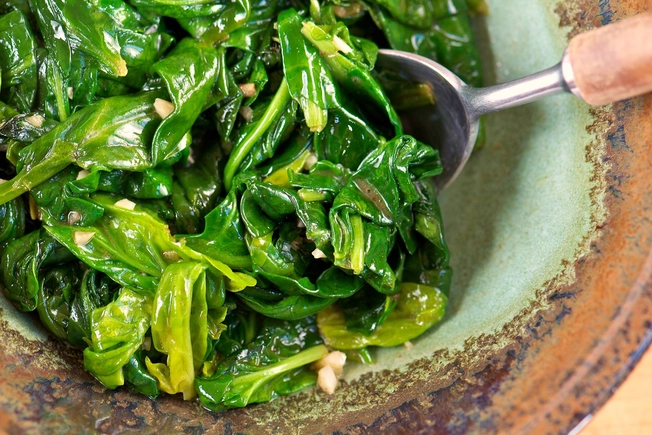
Dark Leafy Greens
Your parents were onto something when they told you to eat your greens. They’re full of vitamins and minerals. They’re also high in nitrates, a substance that helps to open blood vessels so oxygen-rich blood can reach your heart. You’ll find them in veggies like:
- Lettuce
- Spinach
- Bok Choy
- Mustard greens
- Arugula
Serving tip: Bring out the flavor by adding greens to a stir-fry, sauté them with olive oil, or roast them with garlic.
IMAGES PROVIDED BY:
- merc67 / Getty Images
- rodrigobark / Getty Images
- Linda Raymond / Getty Images
- Justin Ong / Getty Images
- PicLeidenschaft / Getty Images
- Westend61 / Getty Images
- OsakaWayne Studios / Getty Images
- Rmcarvalho / Getty Images
- 4kodiak/ Getty Images
- dashu83 / Getty Images
- DronG / Getty Images
- YelenaYemchuk / Getty Images
- Helen Camacaro / Getty Images
- Basilios1/ Getty Images
- Elena_Danileiko / Getty Images
- Arletta Cwalina / EyeEm / Getty Images
- LauriPatterson / Getty Images
- (Left to right) JoLin / Getty Images, Jack Andersen / Getty Images, Maurizio Polverelli / 500px / Getty Images
- David Sacks / Getty Images
- Marvin Fox / Getty Images
- PoppyB / Getty Images
SOURCES:
American Diabetes Association web site.
American Dietetic Association web site.
American Heart Association web site.
CalorieCount.com
Edgar R. Miller III, MD, PhD, associate professor of medicine and epidemiology, Johns Hopkins University, Baltimore, Md.
Jeffrey Blumberg, PhD, professor of nutrition, Tufts University, Boston. Mayo Clinic web site.
National Cholesterol Education Program, Natl. Institutes of Health.
Liu, S. Diabetes Care, December 2004.
MensHealth web site.
News release, Public Library of Science.
NutritionData web site.
Nutrition Diva web site.
Ronald Prior, PhD, research chemist/nutritionist, USDA, Arkansas Children's Nutrition Center, Little Rock, Ark .
Samieri, C. Neurology, 2011.
Scarmeas, N. Neurology, 2011.
Sun, Q. PLoS Medicine, published online Sept. 6, 2011.
USDA web site.
Texas Heart Institute: “Nitrates.”
Penn Medicine: “5 Superfoods to Improve Heart Health.”
Oregon State University Extension Service: “Say No to Disease: Preventing and Reversing Disease by Generating Nitric Oxide with Whole Foods.”